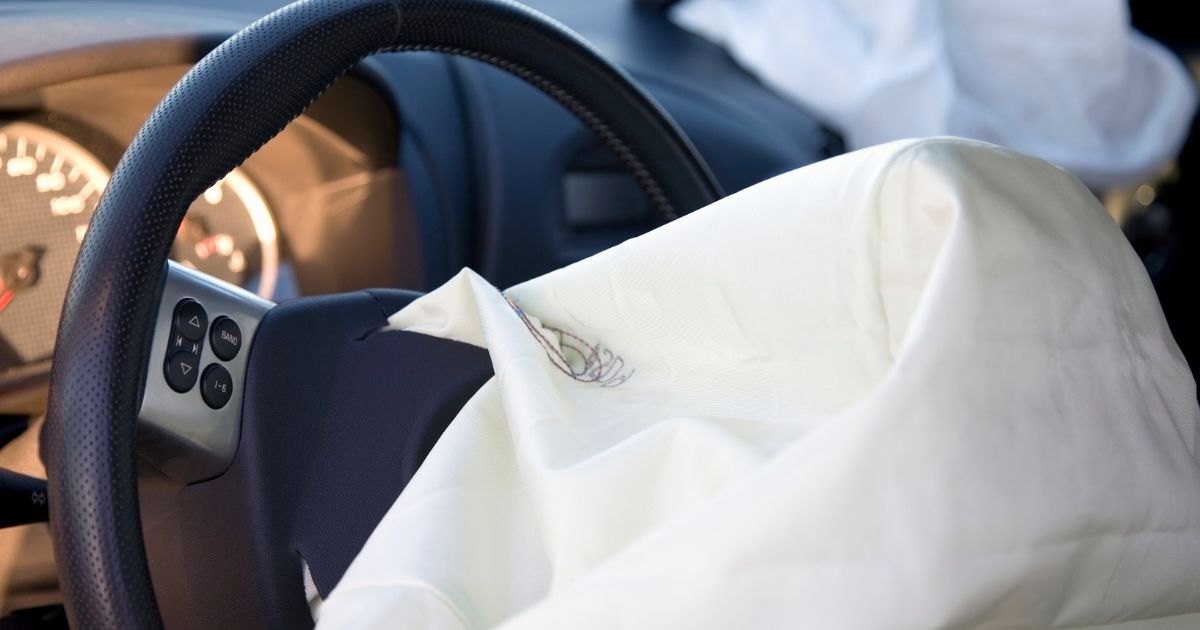A U-turn is a type of left turn, which are among the most dangerous traffic moves. It is not always easy to determine who is to blame for a U-turn car accident. In some cases, it is the turning driver who did not wait for the right time to turn. In other cases, it is the oncoming driver whose speeding or otherwise careless act causes the crash.
While a U-turn is often a convenient way to change direction, it can also be quite dangerous as well. Here are a few common types of U-turn accidents:
- The turning driver makes too wide of a turn and sideswipes a vehicle in the next lane.
- The turning driver takes the turn too slowly and collides with fast-moving, oncoming traffic.
- The turning driver sets off a multi-vehicle accident.
- The turning driver fails to scan for pedestrians and hits one in the crosswalk while making the U-turn.
For oncoming drivers, there is often very little they can do to avoid a vehicle that makes a sudden, unexpected U-turn in their path. If they cannot swerve in time, they will either collide with the turning vehicle or stop suddenly and possibly get rear-ended.
Are U-Turns Legal in Virginia?
It is important for drivers to know the laws when it comes to U-turns. In most states, including Virginia, drivers can only make a U-turn when it is reasonably safe. In other words, the turning driver can see oncoming cars and gauge their speed to properly time a turn.
There are certain locations where making a U-turn is illegal. Drivers who turn at intersections where a No U-Turn sign is posted are committing a traffic violation and can get a ticket or other penalties.
In Virginia, U-turn are generally prohibited in the following circumstances:
- At locations that are not intersections.
- When a No U-Turn sign is present
- Near a crest grade or on a curve where oncoming drivers cannot see the turning vehicle from at least 500 feet away.
What are the Penalties of Illegal and Unsafe U-Turns in Virginia?
When it comes to U-turns in Virginia, the laws on left turns will apply. The primary statute requires left-turning vehicles to yield the right-of-way to any vehicle approaching from the opposite direction. When pedestrians are present, a turning driver should yield to other vehicles and pedestrians. The only time a left-turning driver has the right-of-way is when they are turning on a left signal.
In Virginia, the penalty for an illegal U-turn includes a fine and three points on the motorist’s driving record. It should be noted that some drivers may avoid a conviction on their record, especially if they have a clean driving record prior to the violation.
Who is Liable for a U-Turn Accident?
Anytime a driver makes an unsafe or illegal U-turn that leads to an accident, they are most likely at fault. However, there are some scenarios where the U-turning driver may not be at fault for a crash. For example, if a driver turns on a green arrow signal, they have the right-of-way, but they still have to yield to vehicles and pedestrians. If the oncoming motorist’s careless act, such as texting and driving, leads to a collision, they may be at fault. In some cases, both drivers can be partially at fault.
In a situation where fault is not immediately apparent, it comes down to traffic camera footage, witness accounts, driver statements, and other evidence to determine who is responsible for damages. A lawyer can help determine who is at fault for a U-turn car accident.
What is Contributory Negligence?
Virginia applies contributory negligence. Any person who plays even the slightest part in causing an accident is not entitled to any damages. Unlike other states that use comparative negligence, which assigns a percentage of fault to each party and awards damages accordingly, it is much more difficult to receive damages in a Virginia car accident claim. That is why it is incredibly important to gather as much evidence as possible after an accident. While it is natural to feel frazzled or even frightened after a collision, taking steps to gather information can help build a strong legal case.
How Do I Safely Make a U-Turn?
Motorists who drive in areas where U-turns are permitted should take the following steps:
- Before attempting any U-turn, scan the area for No U-Turn signs. Even if there is no traffic and it seems safe, turning where U-turns are prohibited is illegal.
- Assess the location and determine if it is a safe spot to make a U-turn. Generally, U-turns are safe and legal on two-lane roads that have a throughway for cars to turn.
- When turning left and preparing to enter traffic going the opposite direction, make sure to come to a stop in the median and check that the front and back of the vehicle are not in the way of traffic.
- Look ahead and ensure there is enough space to make a complete left turn. Larger vehicles that do not have enough room to turn will either hit the curb or have to make a three-point turn in the middle of the road. That is both dangerous and illegal.
- Wait until there is sufficient time and space from oncoming traffic to make a full turn and accelerate safely and then proceed.
When Should I Report a Car Accident?
Any driver involved in an accident must report it when property damage, injuries, or fatalities are involved. Every motorist involved must provide their name, driver’s license number, vehicle registration number to law enforcement, and information about property damage or injuries.
It is important to note that there is a statute of limitations. The Virginia statute of limitations refers to the amount of time a person has to bring a lawsuit to court. Plaintiffs have two years from the date of the accident to file a claim after an accident where someone got hurt. In the case of property damage, the limit extends to five years to bring a claim. When a car accident leads to someone’s death, their family or representatives have two years to file a wrongful death lawsuit.
It is clear that there are many different variables involved in a U-turn car accident case. Establishing fault is not always a simple process. That is why anyone involved in a U-turn accident should consult an experienced lawyer.
Virginia Beach Car Accident Lawyers Fight on Behalf of Those Injured in U-Turn Collisions
When a driver makes an unsafe U-turn and pulls out in front of you, there may be no way to avoid a serious collision. At East Coast Trial Lawyers, we assist those injured in all types of car accidents. If you need help with your case, speak with one of our Virginia Beach car accident lawyers today. Call us at 757-352-2237 or complete our online form for a free consultation. We are located in Virginia Beach, and we proudly serve clients throughout Chesapeake, Eastern Shore, Hampton, Newport News, Norfolk, Portsmouth, and Suffolk, Virginia, as well as North Carolina and nationwide.


